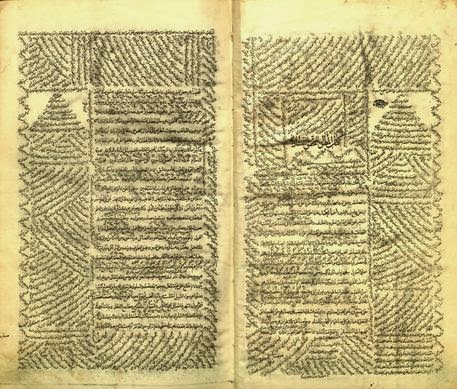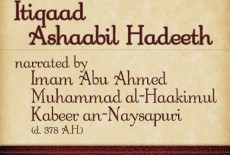Sunan Abi dawood was printed many times in many forms. In dehli (currently Delhi) in 1271 A.H then 1272 then 1273 A.H
likewise in (old) Hind Nol Kasur in 1305 A.H it was published in 2 Volumes (mujallad) and in its hashiya [1] (writings on the margin of the book) were the ta`leeqat [2] of the publisher as wellAlso in Lucknow it was published in 1318 A.H and the contents of Awnul-Wudood sharh sunan abi dawood [ عون الودود شرح سنن ابي داود ] was published by Abul-Hasanat Muhammad ibn `Abdullah ibn Nooruddin fanjaani (rahimahullah) was present in the hashiyat of this publication from lucknow in 2 Volumesit was published from Hyderabad in 1321 A.H and 1393 A.H
Also from Kanpur from muhammadi publishing house in 1346 A.H and in its hashiya was the ta`leeqat of fakhrul hasan gangohi
Like this till date it is being published in India and even in Beirut, istanbul and many places across the globe .
2-Shuruhaat (Explanations) of Sunan Abi Dawood
There are numerous explanations of the sharh of sunan abi dawood.
3- Other works based on sunan abi dawood
There has been a variety of genres that have been written from on or upon sunan abi dawood such as Ikhtisaar by Imam mundhari famously known as Mukhtasar sunan abi dawood
Also Muhammad ibn Hasan ibn `Ali has done its ikhtisaar
There have been some mustakhrajaat `ala sunan abi dawood such as one by Muhammad ibn `Abdul Malik ibn Ayman al-Qurtubi and
Also Mustakhraj by abu Muhammad Qaasim ibn Asbagh al-Maliki al-Qurtubi (D. 340 A.H) .
there is also a Mustakhraj by abu bakr ahmad ibn `Ali ibn Muhammad
There are many zawaid books also written on this. Rijaal based books have also been written on this. Shaykh zubayr `ali zaee rahimahullah and shaykh albaani has also issued some works on sunan abi dawood. there are hawashi , ta`leeqat and diraasat etc also on sunan abi dawood.
Parts of this article has been translated from shaykh rafiq taahir hafidhahullah’s dars on risalah ahli-Makkah by imam abu dawood. I have added more information and footnotes to them.
4- Miscellaneous Information
Imam abu dawood is rare if not unique in the issuing of a work wherein he tries to bring the dalail of the mas’ala the fuqaha or ashaabil madhaahib made. Such that if shaf`ee issued a fatwa on a masail , abi dawood tried to bring its dalail in his sunan. He rahimahullah himself said :
Wala `arifu ahadan jam`a alal istiqsai gayrihi
I havent seen anyone yet who indulges in istiqsa (sort of gathering all the masail with the daleel approach)
and then he rahimahullah says
Wa amma haadhihil masail, masailus thawri wa-maalik wa shaf`ee fa haadhil ahadeeth usooluha
Imam khattabi says in maalimus sunnah that abu dawood is among the saabiqoonil awwaloon – the first of people – to do this kind of book
Footnotes:
[1] Reading a book is simply not enough. The scholars of the past would not simply read a book, but they would add their commentary in the “hashiya – حاشية” (margin). Books would be filled with readers’ reflections, critiques, and gems of their own. In fact, many scholars now source book titles AND the hashiya of so and so.
So, Equivalent to today’s tricoloured highlighting, fluorescent post-it notes, and fancy page marks, the scholars of the past made note-taking a literal art form.
Take a look at some of the writings in the margins of books dated not too long ago (1100-1300 AH). The writings in the hashiya are notes added on AFTER the book was authored.
[2] Ta`leeqat
Ta`leeq is the action of concealing a narrator or more from the chain of narrators at the beginning or end of the chain. For example let us take the case of bukhari to help understand this shortly.
Hafidh Abu Amr ibn as-Salah (d. 643 Ah) mentioned the following with respect to accepting a Mu`allaq report in Saheeh al-Bukhaari , in his famous Muqaddimah page 13 :
“There is doubt about the Mu`allaq hadeeth, that is, the hadeeth with an isnaad from the beginning of which one transmitter or more is omitted. The majority of these are in the book of Bukhari; there are very few in the book of Muslim. We should say : These and similar hadeeth which contain an expression decisively and conclusively indicating their ascription to the person from whom they are ‘suspended’ – for example, the Messenger of Allah (sallalahu `alayhi wa sallam) said (qala) such and such, Ibn `Abbas (r.a) said such and such, Mujaahid said such and such, `Affan said such and such, `Qa`nabi said such and such, Abu Hurayra related (rawa) such and such and similar expressions – are judged to be established as actually coming from that person. On the basis of all of these expressions, it is determined that the person to whom Bukhari ascribed the hadeeth spoke and related (the text that follows). Bukhaari would not have deemed it permissible to state this (i.e to use these unequivocal expressions) without qualification unless it was established in his view that the hadeeth came from the person to whom it was acribed. If the transmitter from whom the hadeeth is suspended is not a companion, the judgement regarding the soundness of the hadeeth depends on the cohesiveness of the isnaad between that person and the companion…. ……. ” End
So such Mu`allaq reports are many in Saheeh al-Bukhari while very less in the Saheeh of Muslim. Ibn Hajar authored a book entitled ” Taghleequt Ta’leeq,” in which he completed all the chains of narrators in the Ta`leeqat of Imam Bukhari from other sources where they were completed. He also summarized this book in the beginning of his book “Fath al-Bari” completing the chains of narrators as well as referring to where such chains were completed. Ibn Hajar said: “I have no knowledge of anyone who endeavoured writing in this matter…I have explained what (among the ta`leeqats) he completed their chains elsewhere in this his book or in another of his books, and those we could not find in his books, we completed them from other scholars’ works”.
[3] It is said that he wrote this book to drive away the newly fanned notion of self interpretation or wrong interpretations of the ahadeeth in his era. You can purchase it from here : http://kitaabun.com/shopping3/product_info.php?products_id=4164. I have purchased from this website and it is genuine alhumdulillah. One of his famous books is Kitab al-Ghunyah `anil Kalam wa Ahlihi and i had shared a passage from it on my facebook profile once which said :
ثم إني تدبرت هذا الشأن فوجدت عظم السبب فيه أن الشيطان صار اليوم بلطيف حيلته يسول لكل من أحس من نفسه بزيادة فهم وفضل ذكاء وذهن ويوهمه أنه إن رضي في عمله ومذهبه بظاهر من السنة واقتصر على واضح بيان منها كان أسوة للعامة وعد واحدا من الجمهور والكافة فإنه قد ضل فهمه واضمحل لطفه وذهنه فحركهم بذلك على التنطع في النظر والتبدع لمخالفة السنة والأثر ليبينوا بذلك من طبقة الدهماء ويتميزوا في الرتبة عمن يرونه دونهم في الفهم والذكاء فاختدعهم بهذه الحجة حتى استزلهم عن واضح المحجة وأورطهم في شبهات تعلقوا بزخارفها وتاهوا عن حقائقها فلم يخلصوا منها إلى شفاء نفس ولا قبلوها بيقين علم ولما رأوا كتاب الله تعالى ينطق بخلاف ما انتحلوه ويشهد عليهم بباطل ما اعتقدوه ضربوا بعض آياته ببعض وتأولوها على ما سنح لهم في عقولهم واستوى عندهم على ما وضعوه من أصولهم ونصبوا العداوة لأخبار رسول الله صلى الله عليه وسلم ولسنته المأثورة عنه وردوها على وجوبها وأساؤا في نقلتها القالة ووجهوا عليهم الظنون ورموهم بالتزندق ونسبوهم إلى ضعف المنة وسوء المعرفة لمعاني ما يروونه من الأحاديث والجهل بتأويله ولو سلكوا سبيل القصد ووقفوا عندما انتهى بهم التوقيف لوجدوا برد التقى وروح القلوب ولكثرت البركة وتضاعف النماء وانشرحت الصدور ولأضاءت فيها مصابيح النور والله يهدي من يشاء إلى صراط مستقيم
“I considered the matter of this [Kalam gaining popularity]. I found that the main reason for it is that Shaytaan, out of his subtle plotting, beautifies for anyone who feels the need for greater intellectual exercising and [wants] more of a clever mind, and makes it appear to him that if he is satisfied in his actions and his opinions with what is contained in the apparent Sunnah and he suffices with what is clearly explained in it, he would become a guide for the public and would be counted as ‘one of the people and of the masses’, then his understanding would have gone to waste and his intellectual exertion and brainpower would fall flat.
By this, [Shaytaan] motivated them to exert excessive effort in logic-based analysis, and innovative ways to oppose the Sunnah and the Athar, by which they can stand out as part of the great intellectuals, and be treated differently in status from whom they consider beneath them in understanding and cleverness. With this argument, [Satan] deceived them until he made them abandon the clear proof, and he caused them to delve into doubts, the adornments of which they clung onto and the realities of which they went astray from, so much so that they did not escape [these doubts] with any fulfilment of the heart, nor did they accept them with any degree of certainty…”
[4] For a comprehensive list see : http://www.ahlalhdeeth.com/vb/showthread.php?t=302596











